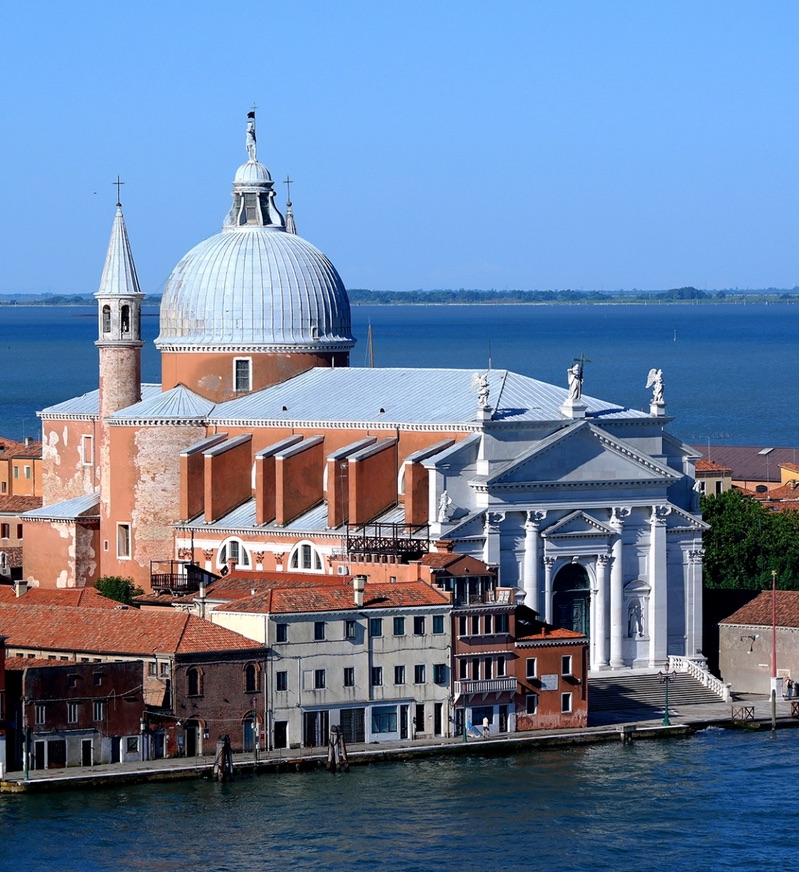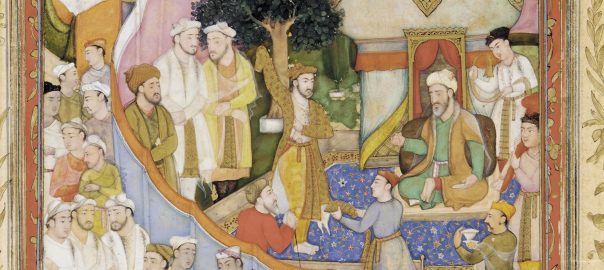I’ll start with a couple of short items about the state of the world in 1575 CE, then move to the main action, which concerned the still-growing Mughal Empire. (Of course, in Europe meantime, numerous Catholic-Protestant battles, etc, were going on.)
Iberian conquistadors consolidate rule in Americas, West Africa
- In “New Spain”, the Spanish settlers established Villa de la Asunción (today Aguascalientes)
- In Chile, they moved the seat of the Real Audiencia (appellate court) from from Concepción to Santiago. West Africa
- In West Africa, the Portuguese conquistadores established the settler-city of São Paula de Laonda (today, Luanda, Angola.)
Venice suffers damaging plague outbreak

I found a few details here: “Between 1575 and 1577, Venice was devastated by a plague outbreak that killed almost 50,000 people – some 30% of the city’s population.” After prayers, petitions, and processions failed to stem the spread, the doge (the leader of Venice) promised to build a church.” This was the Basilica of the Redeemer (Redentore), which was located on the Giudecca Island, “close to the shore, so that it would be visible from the historic center.” It was designed by the famous Italian architect Andrea Palladio.
(Venice would have another very bad outbreak of plague around a century later.)
Spanish religious settler activist visits China
Martín de Rada was an Augustinian monk who had traveled with the Legazpi expedition to the Philippines in 1565. In 1572 he became the Augustinian regional superior in the Philippines. Meantime, he had learned the Cebuano language and had started to study “Chinese” (I’m guessing Mandarin?)
On June 26, 1575 de Rada and a colleague met a delegation of Chinese officials who had arrived in Luzon, and traveled back to China with them. They reached the port of Amoy (Xiamen) in Hokkien province on July 5, and visited “a number of cities,” returning to Manila four months later. The source cited here says: “the embassy fail[ed] due to the Spanish inability to capture Lin Feng, a Chinese pirate.”
Mughals take Bengal
Two years earlier, the Mughal emperor, Akbar, had decisively captured Gujarat. The last remnants of the previous Suri Empire were to the east, in Bengal.
In 1572, an older, Suri-era chieftain who had ruled Bengal had made continuing efforts to pay some obeisance to Akbar had died. His son, Daud Khan was not so inclined. Engish-WP tells us Daud “assumed the insignia of royalty and ordered the khutba to be proclaimed in his own name in defiance of Akbar.” Akbar ordered his governor in Bihar, which abuts Bengal, to “chastise” Daud Khan. But the governor, Munim Khan, did not do so to an extent that satisfied Akbar; so then Akbar set out to do the job himself.
(The banner image above is a detail of a painting of Munim giving a robe of honor to Daud.)
This (slightly too laudatory?) page on English-WP on the battles that ensued gave these details:

On 15 June 1574, Akbar embarked for the river voyage [from far up-river on the Ganges, I think] and was accompanied by many of his best officers Hindu and Muslim… The rainy season being then at its height the voyage was necessarily adventurous and many mishaps occurred… After travelling for 26 days Akbar reached Benares where he halted for three days. He then proceeded and anchored near where the Gomti River joins the Ganges River. On the same day the army which had marched by land arrived. The whole movement evidently had been thought out and executed with consummate skill in the face of tremendous difficulties due to the weather. The ladies and children were sent to Jaunpur; and Akbar in response to urgent entreaties from Munim Khan that he would be pleased to come in person with all speed to the front, advanced to the famous ferry at Chaunsa where his father, Emperor Humayun, had suffered a severe defeat in 1539. The army was then brought across to the southern bank of the river.
So, though it was the rainy season, Akbar decided to proceed and capture Patna, which he succeeded in doing:
An enormous amount of booty including 265 elephants was taken and the common people enjoyed themselves picking up purses of gold and articles of armour in the streams and on the banks. The capture of so great a city in the middle of the rainy season was an almost unprecedented achievement and a painful surprise to the Bengal Sultan. He had reckoned on Akbar following the good old Indian custom of waiting until the Dasahara festival in October to begin a campaign. But Akbar disregarded adverse weather conditions and so was able to win victories in defiance of the shastras and the seasons.
Akbar then returned back to his new capital of Fatehpur Sikri leaving Munim Khan to complete the capture of all of Bengal. In the 1575 Treaty of Katak, Daud ceded the whole of Bengal and Bihar to Akbar, “retaining only Odisha.”
Daud did try to make a comeback. The main Akbar page on WP tells us
A year later, however, Daud Khan rebelled and attempted to regain Bengal. He was defeated by the Mughal general, Khan Jahan Quli, and had to flee into exile. Daud Khan was later captured and executed by Mughal forces. His severed head was sent to Akbar, while his limbs were gibbeted at Tandah, the Mughal capital in Bengal.
And thus, Akbar had created a massive empire that controlled most of the interior of today’s India and Pakistan and most of Afghanistan– and that now also had strong, viable outlets onto the seas and international trading routes on both the northwest and northeast coasts of India.
His page on WP tell us: “Following his conquests of Gujarat and Bengal, Akbar was preoccupied with domestic concerns. He did not leave Fatehpur Sikri on a military campaign until 1581… “
